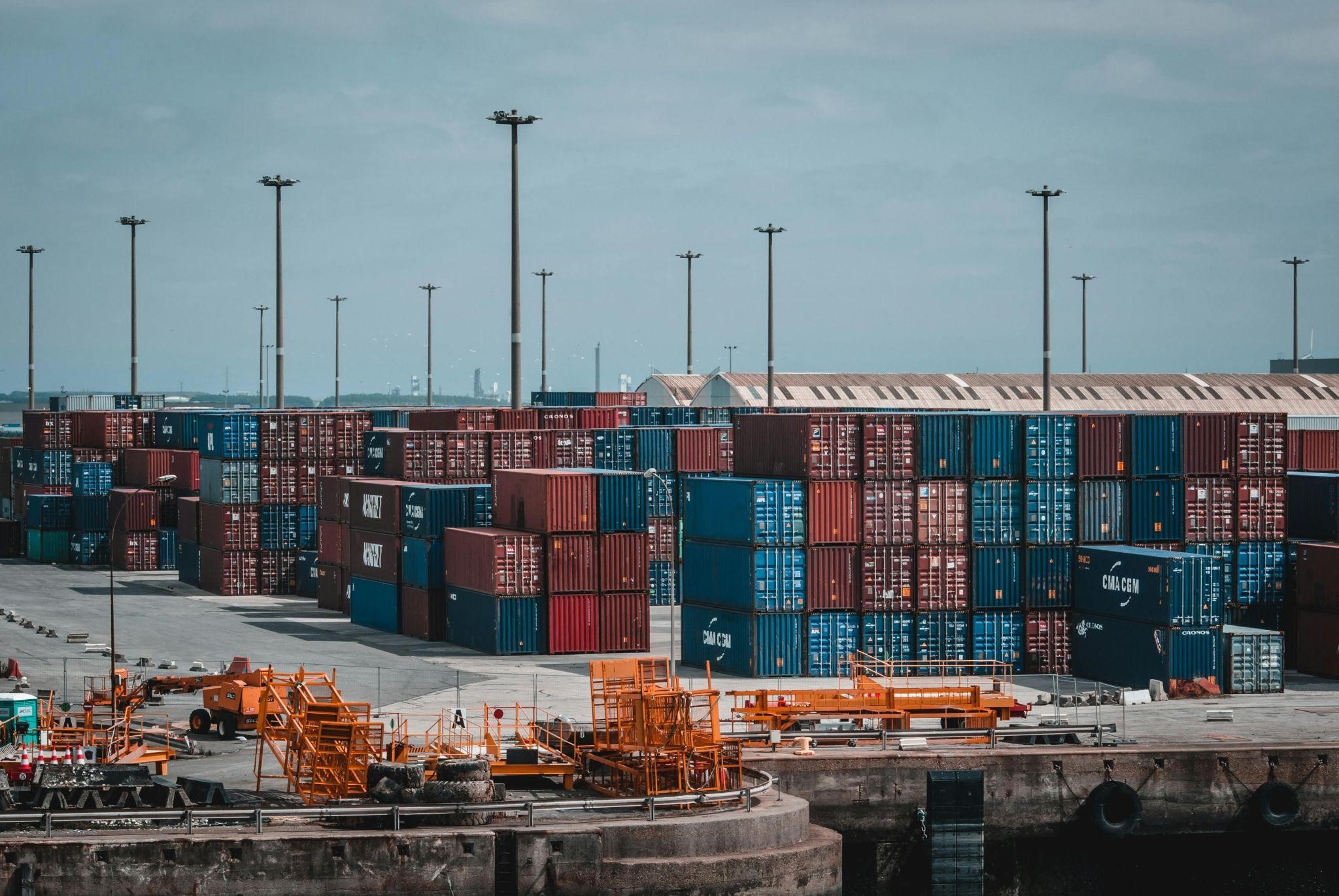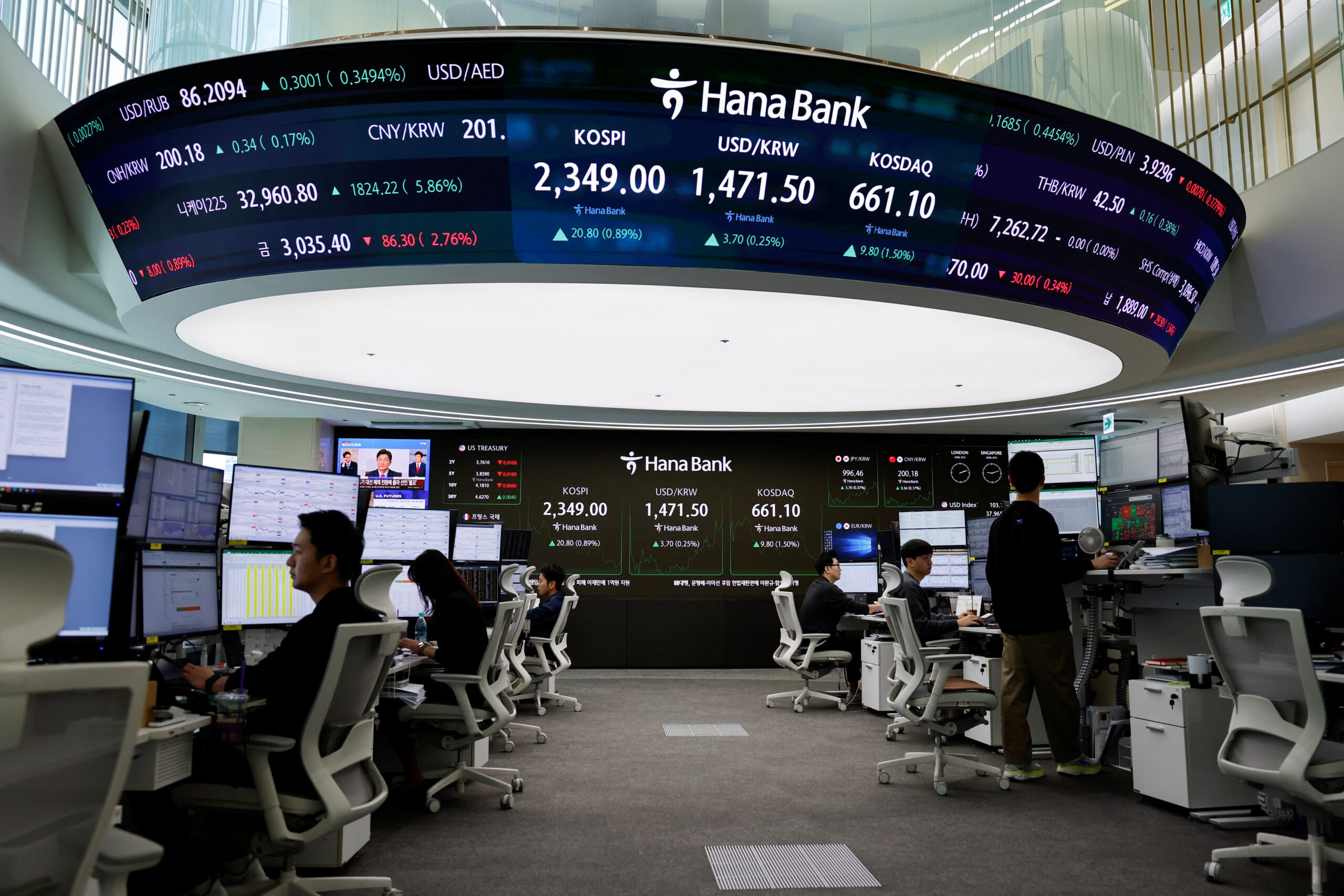
Decoupling or Diversifying? How Investors Are Rethinking Portfolios Amid US-China-EU Trade Realignments
Global economic integration is fracturing along geopolitical lines, challenging long-held investment assumptions and creating new risks and opportunities. With trade tensions escalating to unprecedented levels—US tariffs on Chinese goods reaching 145% and Chinese retaliation at 125%—investors face a rapidly evolving landscape that demands portfolio recalibration. This analysis examines emerging fragmentation patterns in cross-border trade, investment, and capital flows to guide strategic portfolio decisions.
The New Fragmentation Reality: Beyond Rhetoric to Action
Geopolitical fragmentation is no longer a theoretical concern but an economic reality. Since the Russian invasion of Ukraine, a visible reshaping of global trade and investment patterns has emerged along geopolitical lines. Gravity model estimates show trade flows between politically distant blocs have declined by 11% relative to flows within the same bloc, while announced foreign direct investment (FDI) projects between rival blocs have fallen by 12%.
The current situation differs markedly from historical patterns:
● Speed and scope: Unlike the gradual Cold War decoupling that took decades, today's fragmentation is developing rapidly across multiple economic dimensions simultaneously
● Market response: Corporate earnings calls increasingly mention terms like "reshoring," "nearshoring," and "friend-shoring" as business strategies adapt to new realities
● Policy drivers: Beyond tariffs, policy measures including investment screening, export controls, and subsidies for domestic production are accelerating the realignment
While aggregate global trade-to-GDP ratios remain relatively stable, this masks significant underlying shifts in trade relationships and supply chains. As Julius Baer analysts note, "Neither side appears willing to de-escalate, though Beijing has signaled it will not raise tariffs further for now. Meanwhile, both sides seem to be relying on more subtle mechanisms—namely exemptions, reclassifications, and third-country routing."
The Rise of 'Connector' Economies and Investment Implications
A key feature distinguishing current fragmentation from Cold War precedents is the emergence of "connector" countries serving as bridges between rival blocs. These nonaligned economies are rapidly gaining importance by facilitating trade and investment flows between US-centered and China-centered spheres.
Evidence of this connector role appears in both trade and investment data:
● Countries gaining US import market share show strong correlation with increased Chinese outward FDI
● ASEAN has become a major recipient of both Western and Chinese investment flows
● Vietnam, Malaysia, Singapore, and other regional manufacturing hubs are benefiting from supply chain diversification
For investors, these connector economies offer strategic opportunities:
● Targeted exposure: Investments in connector economies may provide indirect access to growth in both major economic blocs
● Diversification benefits: Portfolio allocation to these markets helps mitigate geopolitical risks
● Sector opportunities: Manufacturing, logistics, and trade services in connector economies are positioned for growth
However, the connector strategy introduces new complexity. As the IMF notes, "The more cross-border flows are rerouted via 'connector' countries, the less effective the policies driving fragmentation may be in achieving their stated objectives." This creates policy uncertainty that investors must monitor closely.
Tech Sector Vulnerability and Portfolio Strategy
The technology sector faces particular fragmentation challenges due to its strategic importance and complex global supply chains. US restrictions on semiconductor equipment exports to China, coupled with China's push for self-sufficiency in critical technologies, are reshuffling investment dynamics in the sector.
Recent policy developments highlight the fluid nature of tech sector regulations:
● US Customs temporarily exempted certain consumer electronics from tariffs, only to suggest they may fall under a separate "semiconductor tariff"
● China continues its aggressive push toward technological autonomy under "Made in China 2025"
● The US is working to reshore semiconductor manufacturing through the CHIPS Act
This creates significant investment implications:
● Software vs. hardware exposure: "We still prefer software stocks over hardware, semiconductor, and equipment providers in the longer term," Julius Baer analysts recommend, reflecting lower direct exposure to tariffs and trade barriers
● Valuation sensitivity: Higher volatility justifies more conservative entry points for technology investments
● Geographic diversification: Tech companies with regionalized supply chains and market exposure may prove more resilient
For publicly traded tech firms, investors should evaluate several factors:
1. Dependence on cross-border component sourcing
2. Market concentration in politically sensitive regions
3. Ability to reconfigure production across geographic boundaries
4. Exposure to strategic sectors targeted by industrial policies
Managing Financial Decoupling Risks
Beyond trade and physical investment flows, financial integration is also showing signs of fragmentation. The US Treasury Secretary's comment that "all options are on the table" regarding Chinese ADR delistings signals potential financial decoupling that would significantly impact investors holding Chinese securities through US markets.
The risk of financial decoupling is multifaceted:
● ADR vulnerabilities: Chinese companies currently listed via American Depositary Receipts face potential forced delisting from US exchanges
● Capital flow restrictions: Both US and Chinese authorities are implementing measures that could restrict cross-border investment
● Compliance complexity: Companies face conflicting regulatory requirements from different jurisdictions
For portfolio management, several strategies can mitigate these risks:
● ADR conversion: "A conversion from ADRs to Hong Kong shares remains a sensible option for investors wishing to mitigate the risk of any abrupt ADR delistings," according to Julius Baer
● Diversification across market access points: Using multiple listing venues and currencies to access similar economic exposures
● Dividend focus: "We still favour dividend stocks as a more defensive approach to allocation," particularly in uncertain geopolitical environments
The potential financial fragmentation remains highly uncertain in both timing and scope. However, prudent investors are proactively developing contingency plans rather than waiting for definitive policy announcements.
The Cold War Parallel: Lessons and Differences
Historical comparison with Cold War economic fragmentation provides valuable context for today's investors. During the Cold War, trade between the Western and USSR-centered blocs declined sharply and stayed significantly depressed for decades. Current data shows early signs of a similar pattern, though the magnitude remains much smaller.
Key differences from the Cold War era include:
● Economic interdependence: Today's economies begin from a position of much deeper integration
● Speed of adjustment: Modern supply chains can reconfigure more quickly than historical industrial capacity
● Role of connector economies: Nonaligned countries play a more substantial economic role than during the Cold War
● Financial system integration: Cross-border financial flows create additional complexity not present in earlier fragmentation
The Cold War comparison suggests fragmentation could worsen considerably if geopolitical tensions persist and trade restrictive policies intensify. However, the modern global economy has more potential pathways to adapt through third-country mechanisms and financial engineering.
Practical Portfolio Strategies in a Fragmenting World
For investors navigating this uncertain landscape, several practical approaches can help manage risk while capturing opportunities:
1. Geographic diversification with purpose
● Consider not just country allocation but geopolitical bloc positioning
● Include connector economies as portfolio stabilizers
● Monitor changing trade and investment patterns to identify emerging hubs
2. Sector-level assessment of fragmentation vulnerability
● High: Semiconductors, telecom equipment, strategic minerals
● Medium: Consumer electronics, automotive, pharmaceuticals
● Low: Software services, consumer staples, domestic services
3. Operational resilience as an investment factor
● Companies with distributed manufacturing have lower disruption risk
● Regional self-sufficiency in key operations provides protection
● Diversified supplier networks reduce concentration risk
4. Monitoring policy signposts
● Export control expansions
● Investment screening mechanisms
● Subsidies for domestic production
● Technology transfer restrictions
As the Julius Baer analysis concludes: "For the broader market, we continue to expect consolidation or correction pressure throughout Q2 2025 and recommend investors be more valuation sensitive when entering new positions in the market."
Conclusion: A Fundamentally Altered Investment Landscape
The emerging pattern of global economic fragmentation represents a structural shift rather than a cyclical disruption. Investors must adapt to a world where geopolitical considerations increasingly shape economic relationships and investment returns. While complete decoupling between major economies remains unlikely, the targeted decoupling in strategic sectors and selective reconfiguration of supply chains creates a more complex risk environment.
The evidence suggests we are witnessing the early stages of what could become a much more pronounced fragmentation if current tensions persist. However, unlike during the Cold War, the connective tissue of global finance, the strategic role of nonaligned economies, and the sheer complexity of modern supply chains create more nuanced outcomes than simple binary bloc formation.
For long-term investors, the key challenge is balancing exposure to potential fragmentation risks while maintaining sufficient global diversification. This requires moving beyond traditional country allocation models to consider bloc positioning, connector economy exposure, and sector-specific vulnerability to fragmentation pressures.
As patterns of fragmentation continue to evolve, investors who understand both the historical parallels and the novel features of today's global realignment will be best positioned to navigate the changing investment landscape successfully.
The New Fragmentation Reality: Beyond Rhetoric to Action
Geopolitical fragmentation is no longer a theoretical concern but an economic reality. Since the Russian invasion of Ukraine, a visible reshaping of global trade and investment patterns has emerged along geopolitical lines. Gravity model estimates show trade flows between politically distant blocs have declined by 11% relative to flows within the same bloc, while announced foreign direct investment (FDI) projects between rival blocs have fallen by 12%.
The current situation differs markedly from historical patterns:
● Speed and scope: Unlike the gradual Cold War decoupling that took decades, today's fragmentation is developing rapidly across multiple economic dimensions simultaneously
● Market response: Corporate earnings calls increasingly mention terms like "reshoring," "nearshoring," and "friend-shoring" as business strategies adapt to new realities
● Policy drivers: Beyond tariffs, policy measures including investment screening, export controls, and subsidies for domestic production are accelerating the realignment
While aggregate global trade-to-GDP ratios remain relatively stable, this masks significant underlying shifts in trade relationships and supply chains. As Julius Baer analysts note, "Neither side appears willing to de-escalate, though Beijing has signaled it will not raise tariffs further for now. Meanwhile, both sides seem to be relying on more subtle mechanisms—namely exemptions, reclassifications, and third-country routing."
The Rise of 'Connector' Economies and Investment Implications
A key feature distinguishing current fragmentation from Cold War precedents is the emergence of "connector" countries serving as bridges between rival blocs. These nonaligned economies are rapidly gaining importance by facilitating trade and investment flows between US-centered and China-centered spheres.
Evidence of this connector role appears in both trade and investment data:
● Countries gaining US import market share show strong correlation with increased Chinese outward FDI
● ASEAN has become a major recipient of both Western and Chinese investment flows
● Vietnam, Malaysia, Singapore, and other regional manufacturing hubs are benefiting from supply chain diversification
For investors, these connector economies offer strategic opportunities:
● Targeted exposure: Investments in connector economies may provide indirect access to growth in both major economic blocs
● Diversification benefits: Portfolio allocation to these markets helps mitigate geopolitical risks
● Sector opportunities: Manufacturing, logistics, and trade services in connector economies are positioned for growth
However, the connector strategy introduces new complexity. As the IMF notes, "The more cross-border flows are rerouted via 'connector' countries, the less effective the policies driving fragmentation may be in achieving their stated objectives." This creates policy uncertainty that investors must monitor closely.
Tech Sector Vulnerability and Portfolio Strategy
The technology sector faces particular fragmentation challenges due to its strategic importance and complex global supply chains. US restrictions on semiconductor equipment exports to China, coupled with China's push for self-sufficiency in critical technologies, are reshuffling investment dynamics in the sector.
Recent policy developments highlight the fluid nature of tech sector regulations:
● US Customs temporarily exempted certain consumer electronics from tariffs, only to suggest they may fall under a separate "semiconductor tariff"
● China continues its aggressive push toward technological autonomy under "Made in China 2025"
● The US is working to reshore semiconductor manufacturing through the CHIPS Act
This creates significant investment implications:
● Software vs. hardware exposure: "We still prefer software stocks over hardware, semiconductor, and equipment providers in the longer term," Julius Baer analysts recommend, reflecting lower direct exposure to tariffs and trade barriers
● Valuation sensitivity: Higher volatility justifies more conservative entry points for technology investments
● Geographic diversification: Tech companies with regionalized supply chains and market exposure may prove more resilient
For publicly traded tech firms, investors should evaluate several factors:
1. Dependence on cross-border component sourcing
2. Market concentration in politically sensitive regions
3. Ability to reconfigure production across geographic boundaries
4. Exposure to strategic sectors targeted by industrial policies
Managing Financial Decoupling Risks
Beyond trade and physical investment flows, financial integration is also showing signs of fragmentation. The US Treasury Secretary's comment that "all options are on the table" regarding Chinese ADR delistings signals potential financial decoupling that would significantly impact investors holding Chinese securities through US markets.
The risk of financial decoupling is multifaceted:
● ADR vulnerabilities: Chinese companies currently listed via American Depositary Receipts face potential forced delisting from US exchanges
● Capital flow restrictions: Both US and Chinese authorities are implementing measures that could restrict cross-border investment
● Compliance complexity: Companies face conflicting regulatory requirements from different jurisdictions
For portfolio management, several strategies can mitigate these risks:
● ADR conversion: "A conversion from ADRs to Hong Kong shares remains a sensible option for investors wishing to mitigate the risk of any abrupt ADR delistings," according to Julius Baer
● Diversification across market access points: Using multiple listing venues and currencies to access similar economic exposures
● Dividend focus: "We still favour dividend stocks as a more defensive approach to allocation," particularly in uncertain geopolitical environments
The potential financial fragmentation remains highly uncertain in both timing and scope. However, prudent investors are proactively developing contingency plans rather than waiting for definitive policy announcements.
The Cold War Parallel: Lessons and Differences
Historical comparison with Cold War economic fragmentation provides valuable context for today's investors. During the Cold War, trade between the Western and USSR-centered blocs declined sharply and stayed significantly depressed for decades. Current data shows early signs of a similar pattern, though the magnitude remains much smaller.
Key differences from the Cold War era include:
● Economic interdependence: Today's economies begin from a position of much deeper integration
● Speed of adjustment: Modern supply chains can reconfigure more quickly than historical industrial capacity
● Role of connector economies: Nonaligned countries play a more substantial economic role than during the Cold War
● Financial system integration: Cross-border financial flows create additional complexity not present in earlier fragmentation
The Cold War comparison suggests fragmentation could worsen considerably if geopolitical tensions persist and trade restrictive policies intensify. However, the modern global economy has more potential pathways to adapt through third-country mechanisms and financial engineering.
Practical Portfolio Strategies in a Fragmenting World
For investors navigating this uncertain landscape, several practical approaches can help manage risk while capturing opportunities:
1. Geographic diversification with purpose
● Consider not just country allocation but geopolitical bloc positioning
● Include connector economies as portfolio stabilizers
● Monitor changing trade and investment patterns to identify emerging hubs
2. Sector-level assessment of fragmentation vulnerability
● High: Semiconductors, telecom equipment, strategic minerals
● Medium: Consumer electronics, automotive, pharmaceuticals
● Low: Software services, consumer staples, domestic services
3. Operational resilience as an investment factor
● Companies with distributed manufacturing have lower disruption risk
● Regional self-sufficiency in key operations provides protection
● Diversified supplier networks reduce concentration risk
4. Monitoring policy signposts
● Export control expansions
● Investment screening mechanisms
● Subsidies for domestic production
● Technology transfer restrictions
As the Julius Baer analysis concludes: "For the broader market, we continue to expect consolidation or correction pressure throughout Q2 2025 and recommend investors be more valuation sensitive when entering new positions in the market."
Conclusion: A Fundamentally Altered Investment Landscape
The emerging pattern of global economic fragmentation represents a structural shift rather than a cyclical disruption. Investors must adapt to a world where geopolitical considerations increasingly shape economic relationships and investment returns. While complete decoupling between major economies remains unlikely, the targeted decoupling in strategic sectors and selective reconfiguration of supply chains creates a more complex risk environment.
The evidence suggests we are witnessing the early stages of what could become a much more pronounced fragmentation if current tensions persist. However, unlike during the Cold War, the connective tissue of global finance, the strategic role of nonaligned economies, and the sheer complexity of modern supply chains create more nuanced outcomes than simple binary bloc formation.
For long-term investors, the key challenge is balancing exposure to potential fragmentation risks while maintaining sufficient global diversification. This requires moving beyond traditional country allocation models to consider bloc positioning, connector economy exposure, and sector-specific vulnerability to fragmentation pressures.
As patterns of fragmentation continue to evolve, investors who understand both the historical parallels and the novel features of today's global realignment will be best positioned to navigate the changing investment landscape successfully.



